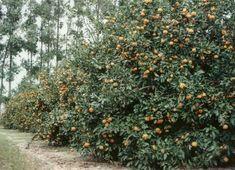
In terms of size, Uruguay is a man among giants when compared to its South American rivals. However, the country’s citrus industry packs a hefty punch and the industry enjoys a solid reputation as a quality fruit producer.
Caputto claims to handle 45 per cent of Uruguay’s total citrus exports and normally begins shipping Satsumas in week 9. Each season the firm tries to prepack at source in order to avoid high costs in the UK.
As well as lemons, the company exports a wide variety of easy peelers and oranges to the UK. “This season we are not looking to ship new varieties but we would like to consolidate our offer of clementines (Marisols, clemenules and clemenfinas) and navels (navelinas, Washington Navel, navelates and lanelates) with increases in volume and an extension of the season,” says Caputto.
Armed with larger volumes this season, Caputto is aiming to increase its presence in key export markets. “Our forecast for this season is to increase our production by between 5-10 per cent,” the company’s Cesar Caputto tells the FPJ Supplement. “We plan to ship around 17,000 tonnes to the UK.”
Last November, Caputto gained BRC certification for its packhouse and it is in the process of expanding its packing line.
In terms of strategy, Caputto plans to continue purchasing more fruit from its partners in South Africa and Argentina. “In the short term, it is not possible to increase volumes in Uruguay,” Caputto claims.
“Every season, we aim to be more competitive without decreasing our quality,” he continues. “This means being more efficient in costs and logistics, as well as fulfilling our programmes.”
Another company that is heavily involved in Uruguay is citrus giant San Miguel. According to the company’s commercial manager Adolfo Storni, San Miguel works with independent growers that account for about 30 per cent of total volumes. “The UK received about 8,000 tonnes of San Miguel fruit from Argentina and Uruguay last year,” Storni says.
San Miguel does not intend to rest on its laurels and has ambitious plans to further boost its activities in Uruguay. “San Miguel will plant 500 hectares in Uruguay and improve packhouse productivity,” Storni says. “Also, our new varieties will replace old plantations.”
Meanwhile, Urud’or exports a range of citrus to the UK, such as lemons, navel, Salustiana and Valencia oranges. It also exports a vast array of easy peelers including the varieties satsuma, clementine, clemenvilla/Nova, clemend’or, Ellendale and Urunique mandarins.
“In the UK, we consider that mandarins are the most popular citrus item and exports peak during March to October,” notes Ian McCulloch of Urud’or.
Urud’Or produces citrus mainly in the northwest of Uruguay in Paysandú and in the south (Colonia, San José, Canelones, Montevideo and Maldonado).
One of the company’s major growers is putting the finishing touches to a new coldstore facility. The new construction will have the capacity to hold 3,000t and is expected to be fully operational by the end of February.
According to the company, the citrus industry experienced drought conditions late last year. However, Urud’or claims that it will not affect 2005 volumes as the citrus it produces is almost completely under irrigation.
Urud’or believes that Uruguayan growers are committed to achieving the best results possible and the company is looking into increasing its seedless citrus volumes in the future.
While South Africa and Argentina represent Uruguay’s biggest competitors, Urud’or aims to continue increasing its exports to its most important markets which includes the UK. This season, the company is targeting a 20 per cent rise in its exports over 2004 volumes.
Having already achieved EurepGAP certification, the company is also working towards gaining Tesco’s Nature’s Choice status and the British Retail Consortium standards.



